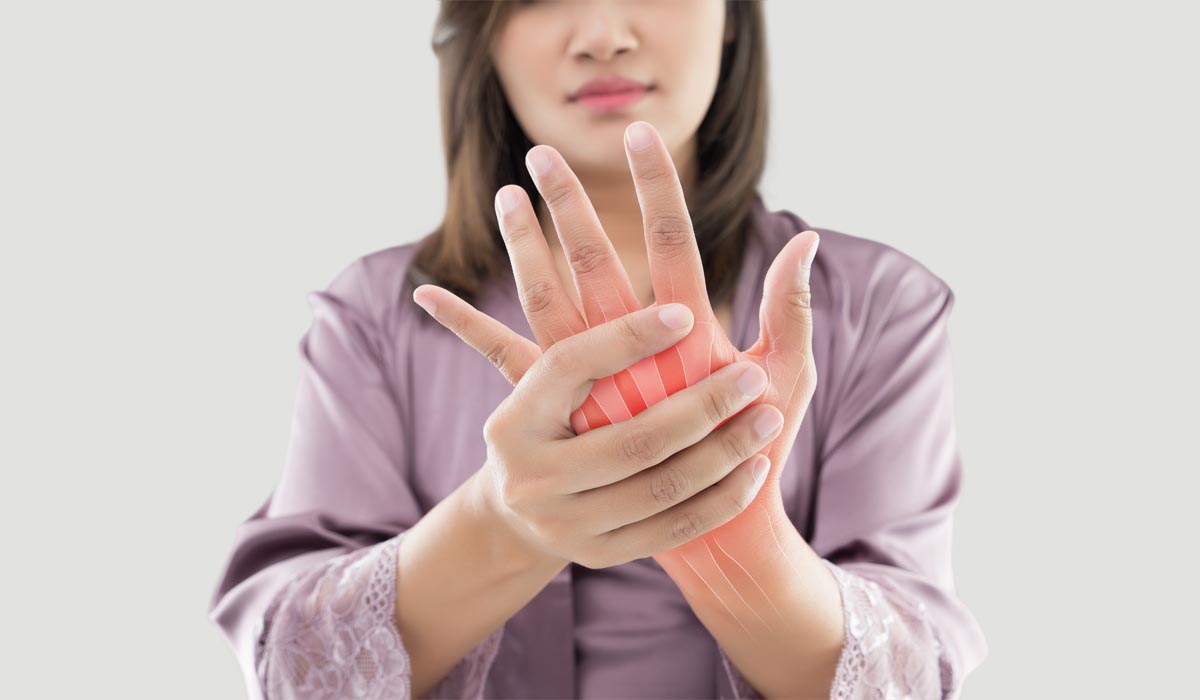✨Book online and enjoy a 5% discount on your first consultation
Home » Family Medicine Services » Rheumatic Conditions


Medical Service Name – Rheumatic Conditions
Rheumatic disorders are autoimmune and inflammatory diseases that cause your immune system to attack your joints, muscles, bones, and organs. They’re sometimes bundled together as “arthritis.”
Rheumatic illnesses, which include most types of arthritis and spondyloarthropathies (inflammatory spinal ailments), are often severe, chronic, and progressive, meaning they become worse with time. Early diagnosis and therapy can slow the progression of many rheumatic ailments.
According to studies, people with rheumatoid arthritis (RA) in the Middle East have a longer time to get diagnosed and use less disease-modifying anti-rheumatic drugs (DMARDs).
Possible Causes
The real cause is unknown, although it is thought to be multifactorial. The immune system is dysregulated in most autoimmune diseases due to genetic risk factors and environmental stimuli. It begins to damage the joints and other tissues.
Women are substantially more likely than males to have autoimmune illnesses, with approximately 65 percent of sufferers being female. An autoimmune sickness in the family may raise the risks of acquiring one.
Risk Factors
Sign & Symptoms
The most frequent symptom is joint pain, which can range from moderate to severe and cause impairment. The discomfort is often accompanied by joint stiffness, which is worst first thing in the morning. Some people may have pain and stiffness across their entire body and swelling in the afflicted joints. Back pain and stiffness are the most common symptoms of ankylosing spondylitis, which affects the spine’s joints.
Arthritis affects the joint’s surface and, in some instances, the underlying bone. If left untreated, the illness develops and causes joint degeneration, which can lead to abnormalities. When infected, some types of arthritis are classed as systemic.
When inflammation occurs, some types of arthritis may cause harm for almost every organ or system, such as the heart, lungs, kidneys, eyes, blood vessels, and skin. Lupus, often known as SLE or systemic lupus erythematosus, is a dangerous inflammatory illness that affects the internal organs, joints, and even skin and can be deadly in severe circumstances.
Diagnosis
The diagnosis is made based on the symptoms and a thorough examination of the joints for indications including joint swelling, restricted range of motion, and a crushing or grinding feeling.
Simple x-rays generally confirm a prognosis of osteoarthritis. Blood testing includes standard examinations as well as antibody-specific tests.
ANA (antinuclear antibody) is an essential screening test for people with clinical characteristics that indicate Lupus. If the ANA is positive, further tests are needed to confirm the diagnosis, determine the severity, and measure the therapy.
Rheumatoid factor and antibodies to cyclic citrullinated peptides are used to treat rheumatoid arthritis (anti-CCP)
Treatment Options at 7DMC
The goal of rheumatoid arthritis therapy is to achieve the lowest feasible degree of arthritic disease activity. If possible, remission and minimize joint damage, improve physical function, and improve quality of life. The most effective therapy for RA is a multifaceted approach that includes medical, social, and emotional care for the patient. Medication, joint stress reduction, physical and occupational therapy, and surgical intervention are all alternatives for treatment.
Pharmacological Interventions
Non-steroidal anti-inflammatory medications (NSAIDs), corticosteroids, and disease-modifying anti-rheumatic therapies are the three main types of Pharmacological Interventions used to treat rheumatoid arthritis (DMARDs).
Therapy
The doctor may recommend you to a physical or occupational therapist who may teach you exercises to maintain joint flexibility. The therapist may also suggest new ways to complete everyday duties that are less taxing on your joints. You could wish to take up an object with your forearms, for example.
Surgery
If medication does not prevent or reduce joint deterioration, you and the doctor may decide to have surgery to restore the damaged joints. Surgery can help you regain your capacity to move your joint. It can also help with pain and function.
Several techniques may be used in rheumatoid arthritis surgery:
Bleeding, infection and discomfort are all risks associated with surgery. Consult our specialists about the advantages and disadvantages.
While you should continue to see our specialists, several natural therapies may help reduce rheumatoid arthritis pain and stiffness (RA). Many of them are easy, such as the use of heat and ice packs. Others, such as acupuncture, need the assistance of a qualified professional.
Although many people survive with their symptoms far into the age of 80 or even 90, RA can shorten a person’s life expectancy by as much as 10 to 15 years. Age, disease progression, and lifestyle variables like smoking and being overweight all impact RA prognosis.
When RA reaches its final stage, much of the previously inflammatory tissue has been eliminated, and bone degradation has occurred. Patients endure discomfort and a significant loss of mobility when the damaged joints cease to function.
Near Dubai Miracle Garden,
Diamond Business centre A,
1st Floor,
Arjan, AI Barsha,
Dubai.
Career@7DMC | Privacy Policy | Patient Data
WhatsApp us